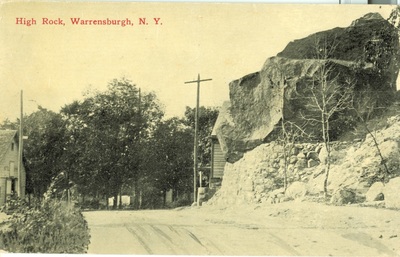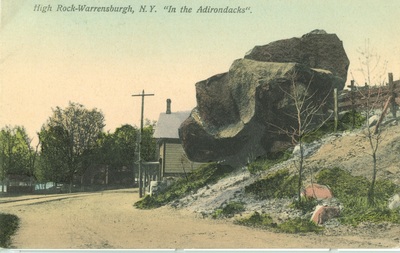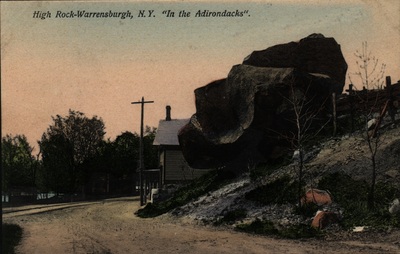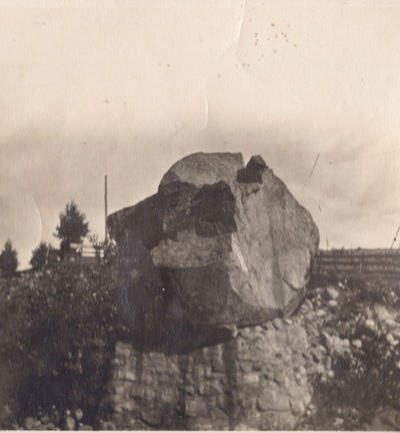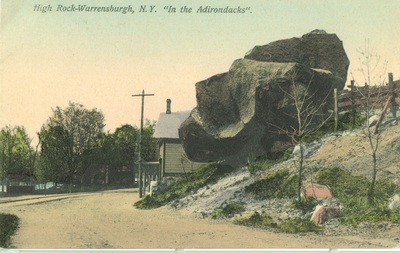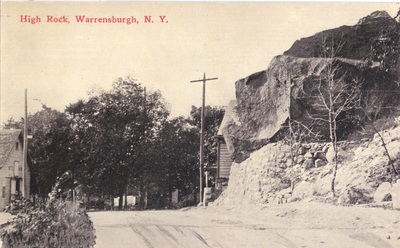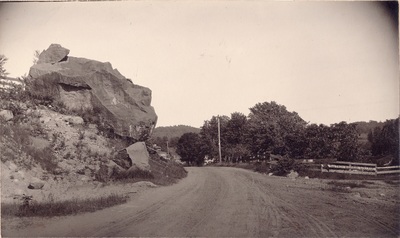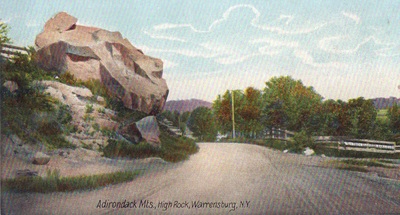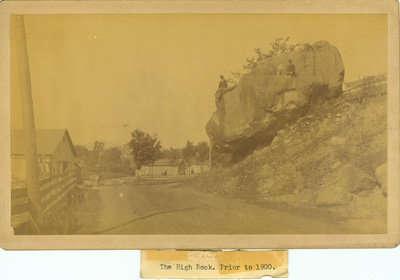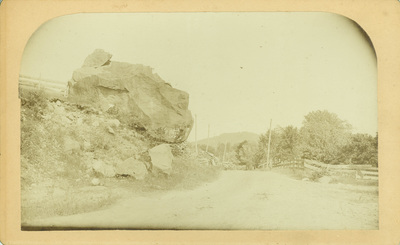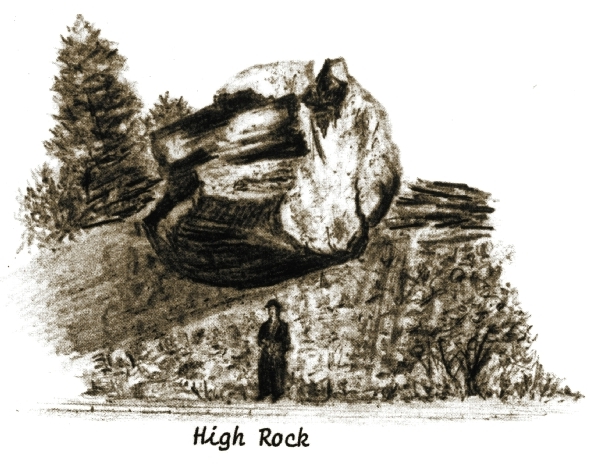High Rock
3690 Main Street
|
The High Rock, a glacial erratic from the last Ice Age approximately 10,000 years ago, was located along Route 9 across from the Judd Bridge, at the site of the current National Grid facility. At one time, Albert Alden was retained by Henry Griffin to build a stone wall in front of it to keep it in place and prevent it from sliding into the road. This massive boulder was a tourist attraction until the State of New York Transportation Department dynamited the rock to widen Route 9 in May of 1931. It was registered in Washington, D. C. as one of the "balanced rocks" in the country and is also spoken of in James Fennimore Cooper’s tales. It has been said that Native Americans met there and used it as their "council rock."
The Blockhouse. The following article, written by Jean Alger of the Thurman Yorker Club, appeared in a January 1963 issue of the Warrensburg News. (The Thurman Yorker Club, affiliated with the Junior Division of the New York State Historical Society, predated the John Thurman Historical Society.) “In the Year 1790-91 during the trouble between the government and the Indians along the frontier, an old Indian trail leading north from Lake George passed close to the foot of Crane Mountain. Memories of former raids being fresh in their minds, the inhabitants built a blockhouse. They gathered from their surrounding wilderness homes to the hill at the rear of a large boulder. Speedily they cleared away the forest, which hid its summit and executed from the logs a two-story blockhouse sufficient for protecting their families from small Indian raiding parties. It was never recorded that they had to use it for the purpose it was constructed and even traces of its ruins have been long vanished.”
The Blockhouse. The following article, written by Jean Alger of the Thurman Yorker Club, appeared in a January 1963 issue of the Warrensburg News. (The Thurman Yorker Club, affiliated with the Junior Division of the New York State Historical Society, predated the John Thurman Historical Society.) “In the Year 1790-91 during the trouble between the government and the Indians along the frontier, an old Indian trail leading north from Lake George passed close to the foot of Crane Mountain. Memories of former raids being fresh in their minds, the inhabitants built a blockhouse. They gathered from their surrounding wilderness homes to the hill at the rear of a large boulder. Speedily they cleared away the forest, which hid its summit and executed from the logs a two-story blockhouse sufficient for protecting their families from small Indian raiding parties. It was never recorded that they had to use it for the purpose it was constructed and even traces of its ruins have been long vanished.”
|
High Rock by Marie Fisher The traveler approaching the lower borough as the residents called the lower village after crossing the iron bridge which spans the Schroon River, will discover at about forty rods distance a huge boulder whose front over-tops the highway. In 1790-91, during the trouble between the government and the Indians along the frontier, the Old Indian Trail leading from the Mohawk River past the base of Crane Mountain to the lake being yet open, and memory of former Indian raids being yet fresh in the minds of the inhabitants, they gathered from the surrounding wilderness homes to the hill at the top of the big rock, speedily cleared away from forest which hit its summit, and erected from the logs a two-storied blockhouse with portholes and fastenings, sufficient for the purpose of protection against ordinary Indian attack. It is not recorded that it was necessary to use it for defense and all of its ruins have been obliterated. |



